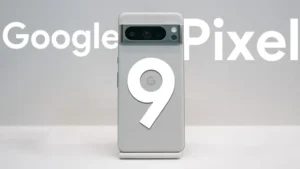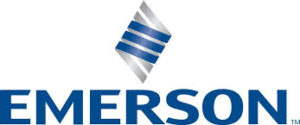
Advertisers use a wide range of tools when creating Google Display Network (GDN) campaigns. But they still struggle to reach their target audience.
This could be the resultant of two factors:
- They may lack skills to develop attractive advertisements;
- They may still have to learn about ad sizes and types.
As an online marketer, you no longer have to learn those skills. In case you’re curious, Google solved your problem by introducing responsive display ads (RDAs).
This article will answer the question: “What’s one benefit of using responsive display ads?” Perhaps you are wondering, “What are such responsive display ads that Google introduced?” Well, these ads automatically adjust to the format, size, and appearance of your ads. There’s no need to go through the hustle and bustle of doing everything yourself. Isn’t this music to your ears?
Not only will your ads fit within available ad spaces; they will also be better displayed across different platforms. Not sure how this is possible? Google’s RDAs automatically adjust your assets through a combination of machine learning (ML) elements.
Thanks to such a combination, you can easily create effective responsive display ads now. Your RDAs will help you attract your target audience and increase your return-on-investment (ROI). This in part answers the question “What’s one benefit of using responsive display ads?” If you don’t want to leave the money on the table, then continue reading.
How Responsive Display Ads Work
As mentioned earlier, responsive display ads are easier to create than previous display ads. size display ads, you need to prepare the following assets:
- Images
- Headlines
- Logos
- Videos
- Descriptions
But you need to customize your assets before uploading them to Google. This is because Google requires that you provide branded, high-quality images and videos. Such images and videos will display well on Google’s Display Network. First, let’s look at these assets one by one.
1- Images
Google recommends submitting a landscape image and a square image for your ad. This will help facilitate the creation of your ads and improve their display. You can use either the free stock images available online or your site’s images.
2- Logos
You’d also prepare both a landscape version and a square version of your logo. Google will use these two versions to populate the logos section of the ad.
3- Videos
Aside from images, your RDAs would perform better with videos on the Display Network. Then, you need to include videos in your responsive display ads campaign as well. You need to upload different individual assets; Google will use them to show a combination of different assets.
One user may see videos in your ads; the other may see images. Which asset should be shown largely depends on a platform and performance. Should videos drive better performance for you, Google will choose to show them.
4- Headlines
You also have to find ways to craft better headlines (90 characters max). Nowadays gadgets niches are rapidly increasing in the sale like (Skateboard, best smartwatches…etc). There is a section where you will need to fill in your ad information. In those lines, you can write a short and longer version of the headline.
5- Descriptions
Your job is to provide a catchy description of your ad (90 characters max). You can write up to 5 different in-depth descriptions; each should describe what your ad is all about. So, you need to think of effective ways to describe your product or service.
Here, you will also provide your business name (25 characters max) and ad URL. Essentially, Google requires that you submit images, logos, descriptions, headlines, and videos.
Not only will this facilitate the creation of your ads; it will also enhance their display. Are you done preparing the above assets? Then upload them and include your text where it is required; Google will automatically generate ads based on your assets.
This is why you’d spend some time customizing your assets. Only then should you upload them to Google. For example, you’d consider customizing your assets to match your brand’s look and feel. In turn, this will help Google make RDAs that speak to your brand.
Such is the power of responsive display ads. Google will be in charge of everything upon the submission of your assets; you can spend your time on other aspects of your online business. The One Benefit of Using Responsive Display Ads in Your Campaigns. Let’s now answer your big question, “What’s one benefit of using responsive display ads?”
You may be used to previous display formats. But this new form of ads comes with a great benefit, as follows:
Responsive Display Ads Can Boost Your Reach While Enhancing Your Brand
Aside from saving your time, RDAs can help you achieve your greatest goal; which is to increase your brand awareness and boost sales. With RDAs, your customized ads can fit nearly any display ad space. You won’t have to do what previous display formats required; you won’t need to upload five different sizes of the same image ad.
Once you customize and upload your assets, Google will adjust them. Then, it will automatically create ads eligible for significantly more placement. Your ads may have to fit a small ad space, but they’ll perform well.
Again, Google uses machine learning that makes decisions based on predictions from historical performance. Google lets you craft the best ad copy to fit your brand. So, there is no way your brand voice will get lost through automation.
With RDAs, Google empowers you to enhance your brand messages across specific target markets. So, you don’t have to constantly create and upload a new different asset. Then, your agency can boost its reach more easily and efficiently with RDAs.
This makes RDAs a must for every online business owner. This best answers the question “What’s one benefit of using responsive display ads?”. Yet, you need to carry out the following recommendations. So, you can make the most of responsive display ads:
- Make sure you customize and upload high-quality images and videos;
- Come up with the best, detailed description of your brand to increase awareness;
- Create multiple headlines, so that Google can determine the best headline for your ad.
Follow the recommendations above to have more chances to increase your brand exposure. As a result, you’ll boost your sales; that is the dream of every online marketer.
Conclusion
Running responsive display ads not only will help you increase your brand exposure; these ads will also help you reach your target audience across different platforms.





